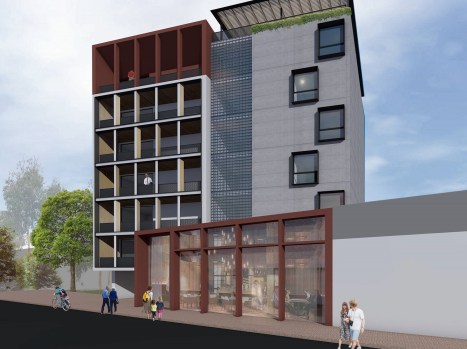
Local governments refute developer peak body’s claim that they’re behind development targets.
The Urban Taskforce, which represents some of Australia’s most prominent property developers and equity financiers, last month criticised the low levels of housing completions across Sydney councils.
The peak body raised concerns that housing growth was not evenly spread across local government areas.
Chief executive Chris Johnson said that “many councils are not carrying their fair share of growth,” citing an analysis of the NSW Housing Monitor data for completions between September 2017 to August 2018.
Mr Johnson said that councils “leading” the development of new homes were the City of Sydney (4,351 completions), Parramatta (4,231) and Blacktown (3,325).
Conversely, he said Willoughby (201 completions), Randwick (200), Waverley (119) and Mosman (8) councils were “at the other end of the housing supply performance.”
Randwick Council was performing “below the Greater Sydney Commission (GSC) targets,” according to Mr Johnson, having completed 200 developments in the assessed year despite its “low target of 450 a year.”
The GSC figures are outlined under the commission’s district plans, which include housing targets to be achieved by 2021 for individual councils to accommodate anticipated growth in the region.
Councils dispute claims
But three Sydney councils contacted by Government News refuted Mr Johnson’s claims that they are behind their development targets.
Randwick Council said it was on track to meet the GSC’s short-term zero-to-five-year target of 2,250 new homes through developments either in the pipeline, currently under construction, approved or under assessment.
“Housing completions within the City of Randwick fluctuate from year to year. However, on average over the past 10 years, the average housing completions has been 411 per year. The specific period that the Urban Taskforce has selected is not typical of the average year,” a council spokesperson said.
“It also misses out on a record month of housing completions for September 2018, being 198 housing completions for that month alone,” they added.
The assessment period reviewed by the Urban Taskforce also overlooks a number of other developments – including boarding houses, student accommodation, seniors housing and secondary dwellings, the spokesperson said.
“These categories make a significant contribution to our overall housing provision and housing diversity.”
Mosman Council similarly said it was on track to meet its GSC target.
“Mosman’s housing supply target of 300 is considered appropriate given local traffic and heritage considerations,” a spokesperson told Government News.
“What is not well understood is that Mosman already has a significant amount of multi-storey residential development, with high density housing comprising almost 40 per cent of all dwellings compared to 24 per cent across greater metropolitan Sydney.”
Willoughby Council said the Urban Taskforce’s comparison was not accurate and that it was “on track to meet, if not exceed” its five-year target of 1,250.
“It is not appropriate to compare Willoughby City with major councils such as the City of Sydney and Parramatta due to the vast differences in their profiles,” the spokesperson said.
“Council has consistently delivered on housing completions with 235 completions to the year to June 2018, 423 in the previous financial year and overall 842 from July 2015 to June 2018.”
Councils ‘surpassing’ targets, commission says
A spokesperson for the Greater Sydney Commission told Government News that the commission was satisfied with the progress being made.
“We are happy with the progress councils are making on their five-year housing targets and, in a number of cases, they are surpassing them,” the spokesperson said.
“We are working in close collaboration with councils, who are best placed to identify local capacity for housing and support quality outcomes for their communities.”
The housing targets are “minimums” the spokesperson said, and councils need to identify “additional opportunities” to achieve the targets to meet housing needs.
Comment below to have your say on this story.
If you have a news story or tip-off, get in touch at editorial@governmentnews.com.au.
Sign up to the Government News newsletter.



